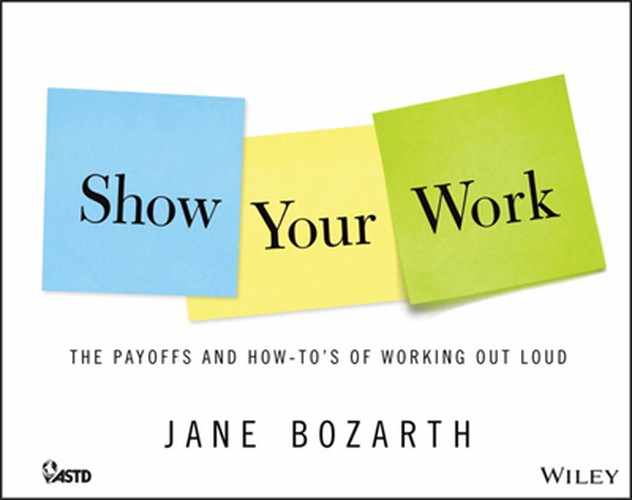“The point is to extract learning FROM work, not impose more work.”
– CHARLES JENNINGS
Learning & Development
WHAT’s L&D’S ROLE?
It’s no secret that Learning & Development (L&D, aka “the training department”) is often removed from the action: a common criticism is that L&D doesn’t know what it’s like in the “real world.” While ride-alongs and site visits might help, they don’t always provide the full picture of how a worker’s day is spent and what situations and decision points he or she might encounter. Charles Dhuigg’s Power of Habit offers the case of Alcoa, an aluminum manufacturer. Despite an intensive companywide concentration on safety, a worker sidestepped protocol to clear a malfunctioning machine part and was killed when the sweeping arm inside a vat restarted. Video recordings showed a number of system failures, including a few that pointed back to inadequate training. What would have been helpful for L&D to know? How could the workers in the area have shown their work?
Helping people show their work can both extend our reach and inform our practice, and in many ways L&D is uniquely positioned for this. We interact with staff at all levels, from novice and new hire to executive, so have enormous potential for influence. Our access here gives us a vantage point in identifying the stronger workers, the ones with skills or knowledge in particular need of capturing. Assuming new roles like online discussion facilitators and community managers position us both to serve as bridges and connectors between people and talent pools and organizational silos and as those who can identify expertise and anecdotes for capture and retelling.
Positioning ourselves as helpers in showing work helps us to support learning in work rather than just learning at work, and helps us get into the spaces between formal training events. It helps learners find and connect with one another, rather than as a one-off interaction between learner and training department. The L&D department actively engaged in helping others show their work will find it a valuable means of formative assessment: How are workers doing? Are they getting it? Are they on track?
WHAT DOES LEARNING LOOK LIKE?
In 2012 teacher Jeffery Heil and professor Valerie Irvine set up a Pinterest board titled “What Does Learning Look Like?” (www.pinterest.com/jheil65/what-does-learning-look-like) As of this writing the board has sixty-two pins. It looks a lot like the one shown here.
Note that NOT ONE picture shows people sitting in chairs listening to someone else talk. There are people working together and talking together. There are people alone doing something: riding a surfboard, building a birdhouse, looking through a microscope. Learning happens when people explore an idea, talk to each other about it, explain their thinking, share what they’re doing. Talking about and showing what we’re doing helps us learn, and helps others learn.

WHAT CAN L&D DO?
Help people capture, publish, and find information
- Offer training in using tools along with any organizational guidelines (on public vs. private sharing, for example). Show examples of how and what others are doing. Don’t let this become bigger than it needs to be, though: the best tools won’t require a long learning curve.
- Help with idea capture: Take photos, help make videos, teach workers how to use photo editing apps and Windows Movie Maker or iMovie. Show them how to take and edit computer screenshots.
- Help workers make items available: choose platforms and develop processes. Who will share what, where? Online public, online private, in person? Within their unit, team, section, unit, organization? By work area, job class, project, interest, area of expertise? Do they know how to access SharePoint, the wiki, or the LMS? Establish protocols for linking items back to worker profiles or artifacts, for tagging items or otherwise storing/making them retrievable (issues with naming items and versions of items, and tagging them with keywords, bedevils most people trying to find anything anywhere anytime). Think about the structure that makes sense for people and the kind of work: Do you need a wiki by business unit, team, section, project, interest, or expertise?
- Don’t forget workers who are not “knowledge workers” and those who aren’t strong writers. Give them easy processes and help them with tools that provide for quick sharing via visuals or voice.
FOR EXAMPLE?
Assign a wiki page to each person in the organization who designs presentations. This will likely cross many job categories, units, people, and levels of expertise. Ask them to provide a snapshot of what others do and what they’re presenting on. Show them how to upload and link out to a slide sharing tool like SlideShare; teach them how to add a quick voiceover if they want to explain what they’re working on or offer notes about the presentation. The wiki pages are editable by those designing the presentations and available for viewing inside the company. Tie this if you like to L&D efforts with “presentation skills” or PowerPoint workshops. At the end of the calendar year hold a “best presentation” contest with prizes for the most articulate, most attractive, most interesting, most fun, and most useful presentations.
FOR EXAMPLE?
The Cheesecake Factory restaurant chain offers its video café to employees via an internal video channel. The company showcases top talent by filming them as they perform their jobs—assembling an architecturally challenging salad, decorating a cheesecake, performing other processes—and makes them available company-wide. A decade ago L&D would have gone to observe the employee, then gone back to the office to make a video themselves. New technology makes capturing video a much easier task, and the age of YouTube has made viewers much more forgiving of less-than-perfect-polished film. This practice helps to recognize talent, surface expertise, connect people with similar interests, and offer teaching aids.
FOR EXAMPLE?
In a previous L&D job, TayloringIt’s Craig Taylor planned a series of “video stories” for sharing on the company’s internal social platform. Some of the stories he found, or that found him, in his words:
- Sales success stories—Interview the top salesperson of the month—what did they do/say/etc. that made them the top salesperson? What made them perform better than others.
- Sales horror stories—what went wrong with a sale that they thought was guaranteed?
- Thinking and acting differently stories—recording people who were doing something differently. Why? What effect was it having? One particular story centered around a team who were feeling “stale.” They decided to take turns to identify a TED talk and distribute it to each team member prior to each team meeting and to use time during the meeting to discuss the content of the video. The upshot of which was that they felt re-energized as a team and several “innovative” new ideas were forthcoming.
I also stumbled upon an interesting story whilst interviewing my former HR director Brett Reid as part of the learner survey I was undertaking. In it he tells a story of conducting a series of coaching sessions with a colleague in Spain, utilizing the FaceTime function on their iPads.
The “takeaway” from the video was to challenge your preconceptions (he had originally been sceptical over how well the sessions would run if they were not face-to-face).
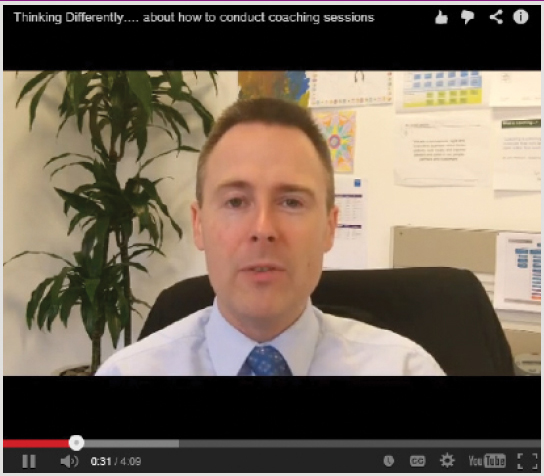
FILL NEW ROLES
New tools and approaches bring new shoes to fill: roles like “community manager” and “curator” and “data wrangler” are new to most organizations. There is a natural space here for L&D to help nurture communities like evolving groups of new hires to alumni groups of an organization’s leadership academy or a commercial endeavor’s training certification program. Workers inundated with information appreciate a good curator, someone who can filter and distribute information from a particular point of view or according to an organization’s established practices.
SUPPORT SERENDIPITY
A great deal of what we know, and do, and accomplish, comes about through happenstance. There is a chance encounter, happening across just the right article on the internet, an odd link between events three years apart. L&D practitioners can help to support serendipity by helping to make introductions, make connections, help people find each other. L&D can help find spaces for people to gather—face to face or online—to up the chances that talent can find each other and conversations ignite some sparks. Greg Lindsay, a visiting scholar at New York University who studies interactions in the workplace, says: Most companies are “still really primitive at this. They compress people in the same space, put in a coffee machine and just hope that something good happens.” (http://online.wsj.com/article/SB10001424127887323798104578455081218505870.html/.) How can L&D make this better?
L&D NEEDS TO NARRATE WORK, TOO
First: we need to set the example. Too many initiatives have involved the L&D department saying: “Here’s the training, now you go perform.” We need to be partners and exemplars, not just voyeurs. We need to participate, give and get feedback, and encourage continuous sharing.
LEAD BY EXAMPLE
Introduce tools. Show it can be done. Be the change. Be the positive deviant.
One day during a webinar on “positive deviance” participants started commenting in the chat box about how the conversation reminded them of song lyrics. This was a perfect opportunity to show a tool—and a little-used feature of it—in context as well as a chance to talk about using music as a support for learning. Rather than shut down the conversation, I popped open Spotify, created a collaborative playlist, and invited everyone to add to it.
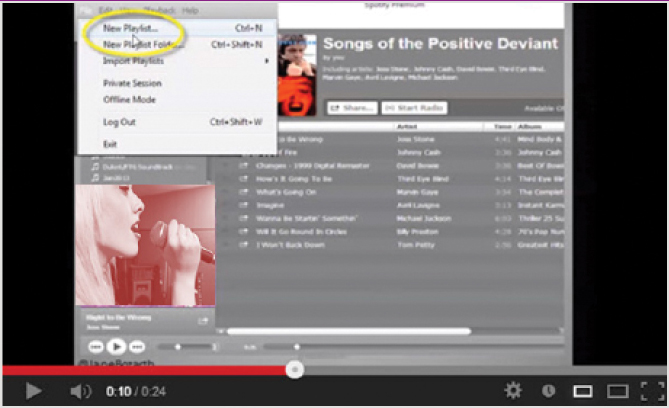
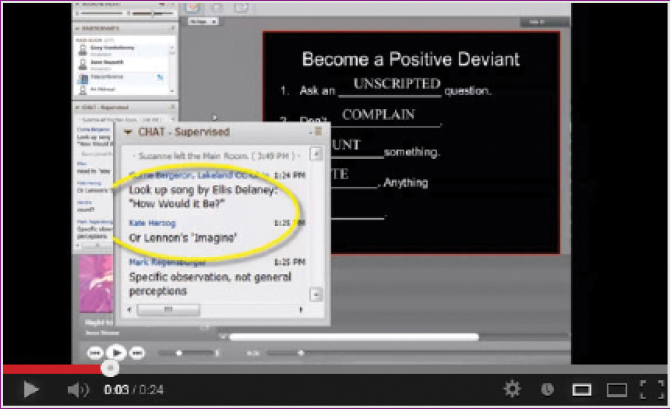
Later I shared this as a YouTube video:
Be the one to make it public. Consultant Trish Uhl travels the world offering prep courses for ASTD’s Certified Professional Learning Practitioner exam. She frequently posts what she is doing in class; here are items created by participants in one of her Owl’s Ledge CPLP prep workshops.
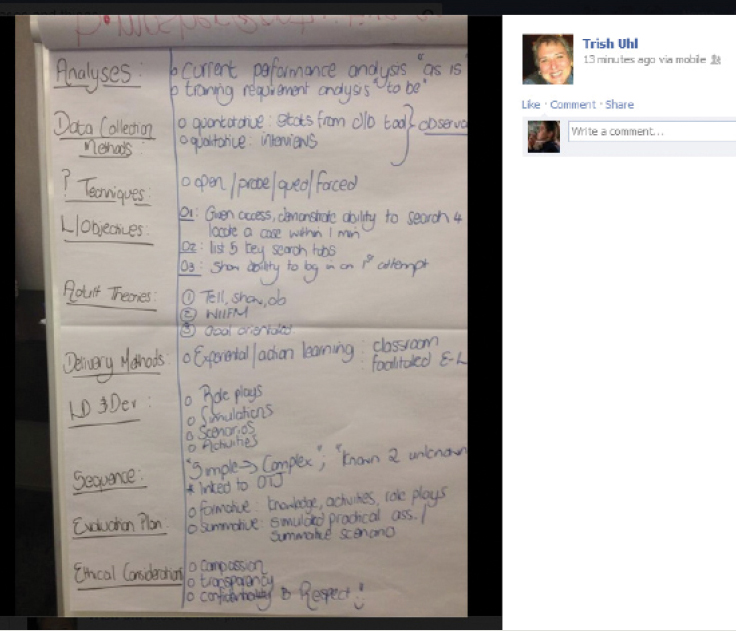
Bonus: this approach can also serve as course marketing and as a way of supporting transfer of new learning back to the job, as it helps others see what happens in the class and helps managers better understand what is covered.
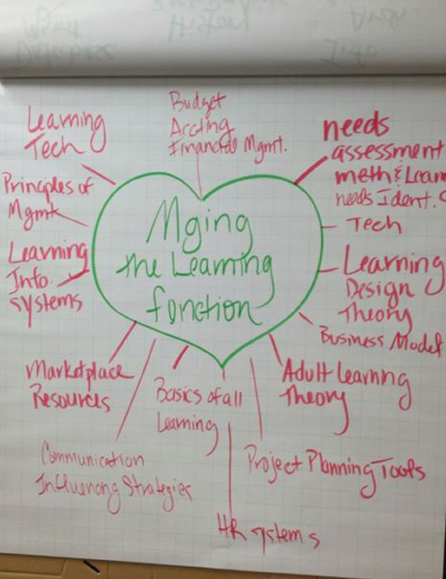
L&D Practitioners: A great way to be sure you are included in and viewed as a part of making work visible and discoverable is to—go first.
HERE’S YOUR CHANCE TO SHOW WHAT L&D CAN DO
Looking over a Twitter conversation among those in L&D, or watching a discussion in an L&D-related LinkedIn group (or talking with our families) reveals a common frustration: People don’t really understand what L&D does (or could do), or worse, they think designing training experiences is nothing more than putting a lecture together with some slides.
Craig Taylor’s experience redesigning a unit’s slide deck—described in detail in the “Benefits to Individuals” section—gave him a chance to show his talents as well as offer a small, rare chance to do a bit of teaching about how and why training practitioners make the decisions they do.
Sometimes it makes sense to create a 10-minute standalone tutorial on “How to Create Better Presentations.” But sometimes it makes more sense to sit down and help solve one problem, in one real context, for one person who needs that.
SHOWING LEARNING SPAWNS NEW LEARNING
Learning rarely happens in a neat straight line. Gloria Mercer’s hand surgery led to learning about cookie making, which in turn spawned an interest in sharing her work, which led to a need to learn about photography and managing a business Facebook page. This piqued her daughter Marlo’s interest in cookie making and led her to opening her own business and then to a need to know about web design.
Those in L&D tend to talk about “learning” with a capital “L.” But that’s not how workers think of it. Learning, for them, is often unintentional and serendipitous, and frequently unconscious. If they see it at all, it’s more likely as “solving a problem” or “getting an answer.” Helping workers narrate their work can help them become more mindful of learning as it happens, and perhaps more intentional about sharing what they’re learning. When Gloria Mercer set out to learn to make cookies she had no idea it would be of interest to so many people, and recognition from others helped her become more focused on documenting and sharing what she was learning—finally culminating in teaching others.
“Social communities leverage an increasingly expensive asset—people—by allowing them to work out loud, connect with more people, establish trust, and find relevant information and solutions more quickly.”
– Rachel Happe
Don’t forget the Vanderbilt study described in the “Benefits to Individuals” section, in which researchers found that explaining our thinking to someone else helps us learn. A critical part of the L&D function is helping learners become better learners, and there are few ways more powerful than helping people to show their work.

And finally: For years L&D has wrestled with the challenge of making their work more a process and less an event. This is our chance. Making the process of showing work painless (and if possible, fun) will go a long way toward helping efforts at showing work a positive and probable proposition. There are lots of opportunities for L&D to be part of the effort.
Cuba Gooding, Jr., on working on The Butler: “Whenever I’m working with an advisor it isn’t like I ask him questions. I watch him. Because it’s something he’s doing when he’s not advising that I want to steal for the character—the way he holds his chin, his posture, how he undoes his tie.”
Time, August 26, 2013.
